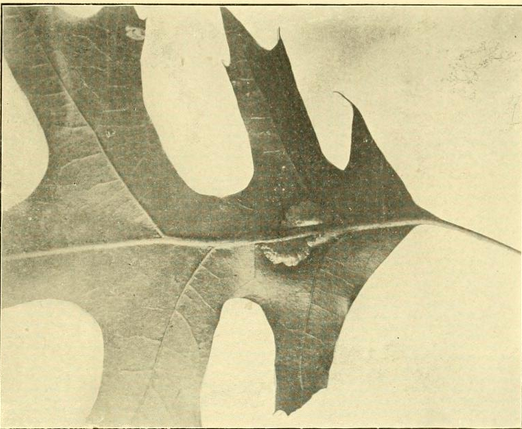Macrodiplosis majalis
Cecidomyia quercus majalis n. sp.
Blister-like gall of Cecidomyia on young leaves of the pin-oak (Quercus palustris).
Generally, these galls occur on the principal ribs of the leaf; sometimes between the ribs. They are oblong, blister-like, hollow; surface somewhat uneven, wrinkled, walls thin; color pale green or reddish. They bulge out on one side of the leaf and have a longitudinal slit on the other. Galls projecting on the under side of the leaf and having the slit on the upper side seem to be somewhat more common than those of the opposite description. The slit can be opened without injuring the gall by gently pulling at the sides. Such galls which grow upon a rib show a trace of it on their longitudinal diameter. The larva, which can be taken out of the slit without lacerating the gall, is rather larger than the majority of the larvae of Cecidomyia, (about 0.2 of an inch long.) and not reddish, as usual, but white, smooth. The larva drops to the ground through the slit at a certain period of its development; hence, empty galls are often found. Found in considerable numbers in the Central Park, N. Y., in May, 1869.
”- Baron Osten Sacken: (1870) Biological Notes on Diptera. (Article 2nd).©
Reference: https://www.biodiversitylibrary.org/page/7541947#page/63/mode/1up








